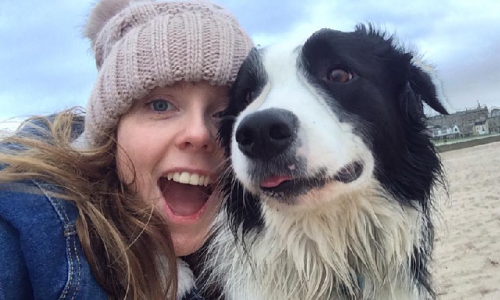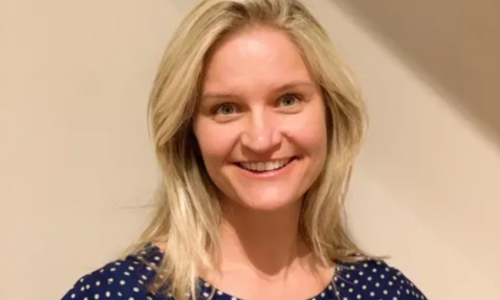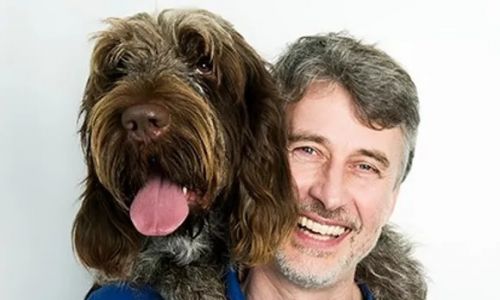Meet Ellie: Veterinary Anaesthetist
"We have a unique opportunity to make our stakeholders aware of environmental impacts and add a cultural authority"
Ellie West
Tell us about your current role and professional interests
As a team, our anaesthetists assess the animals presenting for anaesthesia (and also sedations in the sicker patients) to make their journeys with us as smooth, stress-free and pain-free as possible. We also have roles as pain clinicians both in the acute perioperative cases and as part of our Therapy Centre’s Pain Clinic.
We do a lot of teaching and preparation of guidelines both for our staff, visiting staff and students, and within our referring community. We all have roles within the specialist anaesthesia community too, which keeps us relevant and up to date; I focus on promoting sustainability within veterinary anaesthesia.
When did you know you wanted to work in the veterinary profession?
I just always did – I never questioned it. It was working with animals that I enjoyed the most, and since I had the academic ability and opportunities, I was never discouraged. I often wonder what else I would have enjoyed as much.
What is your favourite part of the job?
I like making the plans and meeting the animals before their procedure. It is an interesting challenge to try and consider all of the animal’s quirks and feel like you have improved their journey. I also like teaching other people some of our tricks and giving them confidence in their own abilities.
What is the most challenging part of your job?
The time pressures when several animals need your attention at once. Ironically, this can be a thrill to deal with too.
Do you have any tips for achieving a good work-life balance?
For me, I have to find time in nature or to be with family and friends. I completed a wildflower identification course over the summer. I love being able to relate to the ‘weeds’ that are around me now, it feels like seeing friends. My children now groan with me at the sight of a carrot family flower though – I found them tricky!
How do veterinary professionals currently help to drive sustainability?
We are beginning to consider the principles of sustainability (as opposed to environmentalism), but we are a way behind an organised approach. There are veterinary professionals engaged in sustainability (e.g. within agriculture), but not so many sustainability professionals (or vets with professional sustainability skills) engaged in the vet sector. I would like to see that change.
Ellie won a Green Champion Award 2019 for her commitment to sustainability
What do you feel are the major opportunities to drive sustainability in the veterinary sector?
We know what the largest carbon impacts are from data produced by governments and other organisations. Vets have opportunities to reduce their own emissions from energy and transport (but also uniquely harmful volatile anaesthetic gases), but also to engage with other sectors such as agriculture to make land use more carbon-sequestering and enhance biodiversity. We have choices as consumers to make too, and we can encourage the manufacture and use of more sustainable and ethical products and processes. As time goes on, we will become more knowledgeable about the ways in which we impact our environment, for example, the effect of veterinary pharmaceutical residues on ecosystems.
Veterinary professionals have a unique opportunity to make our stakeholders aware of environmental impacts, and add a cultural authority to the arguments given our scientific backgrounds and our opportunities to engage with people. Starting these conversations is an important way to overcome the barriers; we need to start talking about ‘how’ and move on from ‘why’.
If you could wave a magic wand and make one improvement to drive the sustainability impact of the veterinary profession, what would it be?
We already have the tools for change, and we know what our future looks like if we don’t use them. That terrifies me. My magic solution would be a collective desire to make effective change.
What are your top tips for veterinary professionals wishing to take the first steps to drive sustainability in their roles?
Target your largest impacts; in clinical practice, those are likely to be carbon emissions from energy use, transport, anaesthetic gases and procurement. Next, develop an environmental policy which empowers all levels of staff within your practice to drive forward innovation. Lastly, audit and communicate your changes. The low hanging fruit can grow back…
Read more from Ellie in this BVA article: 'A journey towards environmental sustainability in one veterinary practice'.
Ellie West
Veterinary Anaesthetist
Meet the people who embed sustainability into their life and work
From the veterinary nurses who advise on responsible antibiotic use and lead welfare campaigns, to the practice managers who actively reduce the environmental footprint of their workplace — we recognise the scale of your impact.



